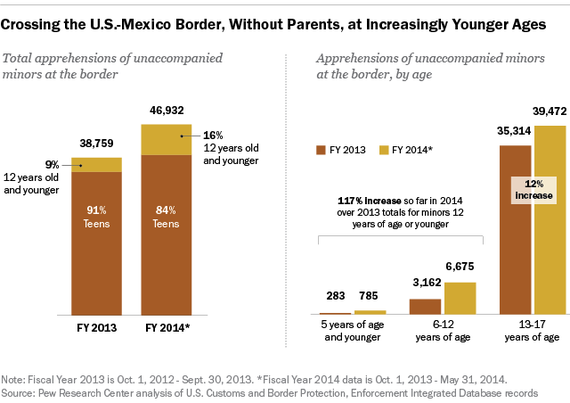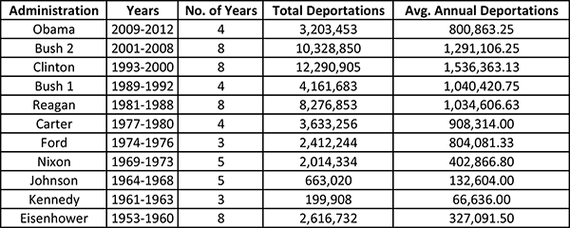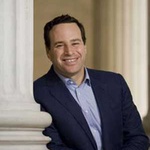
White House file photo
Is Obama's Order Going to Turn Into The Next Amnesty?
President Obama's move to legalize millions of immigrants isn't a conclusion—it's likely to be the start of even more changes.
President Obama’s executive action last week is only an interim step. More amnesty is coming, much more. It must.
More amnesty is coming, first, because the president’s action creates an unsustainable status quo. Millions of people are about to obtain work permits and Social Security numbers—but not (or so the president says) any right to health coverage or other social benefits. What happens if they get sick? What if they lose their jobs? Suffer a debilitating injury at work? According to Obama, these people are “as American as Sasha and Malia” except for the small technical complication of lacking “the right papers.” The president denounced as “cruel” the expectation that illegal aliens return to their native countries. If these people are to stay here, though, how is it not also “cruel” to deny them the same protections enjoyed by other Americans? Almost six in 10 illegal-immigrant adults had no health insurance in 2007 . Is it really plausible that they will passively accept this status quo after they regain residency rights? Almost as soon as the working papers are issued, expect a new round of demands for a second action—one that will enroll the newly documented aliens in social programs.
Obama’s disavowal of social benefits for the newly legalized will not long remain Democratic Party policy. The precedent is President Clinton’s tactical maneuvering on his children’s-health program, SCHIP , back in the 1990s. To gain Republican assent to the program, Clinton agreed that it would exclude new immigrants, people who had lived in the United States for less than five years. Having made the agreement, Democrats almost immediately chafed against it. As a senator, Hillary Clinton sponsored legislation to make all immigrants eligible for SCHIP. Defeated during the George W. Bush years, SCHIP extension was one of the very first priorities of the new Obama administration, and the president signed it into law in February 2009 .
Obama’s successors will likely reverse him on social benefits for migrants just as Clinton’s successors reversed him on SCHIP. They might not even have to: The courts could make the decision for them even before the Obama administration ends. In the 1982 case of Plyler v. Doe , the Supreme Court ruled that illegal immigrants of school age must receive a K-12 education at full public expense. The court held that distinctions based upon immigration status, including illegality, should receive “intermediate” scrutiny, the same degree of scrutiny as distinctions based upon sex. By this time next year, immigrant advocates will be queuing at courtrooms across the nation to argue that the denial of a disability pension, of health coverage, of food stamps violates the standard set in Plyler .
The battle for benefits will be the first of the next amnesties, but not the last. Millions of illegal aliens will not benefit from this round of presidential amnesty. Their advocates in Congress and the White House are content to accept one slice of relief today. They reserve the right to return for more tomorrow. In its press release applauding Obama’s action , the National Council of La Raza cautioned: "We also note that this is just the beginning.” So it is. The Senate “Gang of Eight” bill from 2013 would have legalized 8 million. We’ll soon hear a lot more about the unamnestied 3 million.
And after them, will come new influxes of illegal immigration in the years to come. Obama insisted that his executive action will "not apply to anyone who might come to America illegally in the future.” Brave words, but the president’s deeds contradict them. Illegal immigration, like everything else, responds to incentives, both economic and legal. When the job market falters, as in 2008-2009, illegal immigration slows . When prospective illegal immigrants perceive that law enforcement has relaxed, they seize the apparently proffered opportunity. Suspension of enforcement in June 2012 against the so-called Dreamers—illegal aliens who had entered the country as children—was promptly followed by a surge of illegal immigration by 14- and 15-year-old border crossers .


Pew Research Center
Consider the new opportunity extended by the president. Those illegal immigrants who will be allowed to stay in the United States are those who had a child here and then remained undetected for five years or longer. What message does that send? Come while you can—and have a baby while here?
The president bravely insists that under his new order, "If you plan to enter the U.S. illegally, your chances of getting caught and sent back just went up.” But right now, your chance of getting caught is lower than at any time since the 1970s. Despite the label “deporter-in-chief” applied to him by immigration advocates, Obama has in fact deported aliens at the slowest rate of any president since Richard Nixon, according to the administration’s statistics, as reviewed by the Center for Immigration Studies:
Deportations by Presidential Administration

Center for Immigration Studies
The low figure for Obama deportations would be lower still if the administration did not count as “deportations” arrests and removals at the border that would not have been counted in this way by previous administrations. Enforcement in the interior of the country has almost vanished during the Obama years , down 19 percent from 2011 to 2012 and another 22 percent from 2012 to 2013. In 2014, of course, interior enforcement will shrink even further, as the president exempts from enforcement action 6.5 million of the former 11 million estimated illegal population.
In 2009, the administration gutted the e-verify system by rescinding the rule requiring employers to take action when they detected a likely fake Social Security number. It’s estimated that between 25 percent and 40 percent of illegal immigrants entered on a valid visa and then overstayed. Congress has repeatedly beseeched the Obama administration to institute biometric safeguards to ensure that visitors leave the country on schedule. Yet the 2009 deadline to institute the entry-exit system has repeatedly been brushed aside. The visa system remains the same unpoliced chaos in 2014 that it was in 2009—or for that matter, on September 10, 2001.
Combine the continuing absence of interior enforcement with the president’s own new precedent that a U.S.-born child can act as its undocumented parents’ very own “pathway to” if not citizenship, then at least a work permit, and the shape of yet one more next amnesty takes form. As economic growth accelerates … as employers continue to prefer the greater compliance of employees who have less certain immigration statuses … and as new illegal immigrants arrive and have children, everything is put in place for the next Democratic president to insist that the immigration system is more broken than ever—and that the only way to fix it is with more rounds of non-enforcement and amnesty by other names.
NEXT STORY: Toys That Help Kids Become Global Leaders







